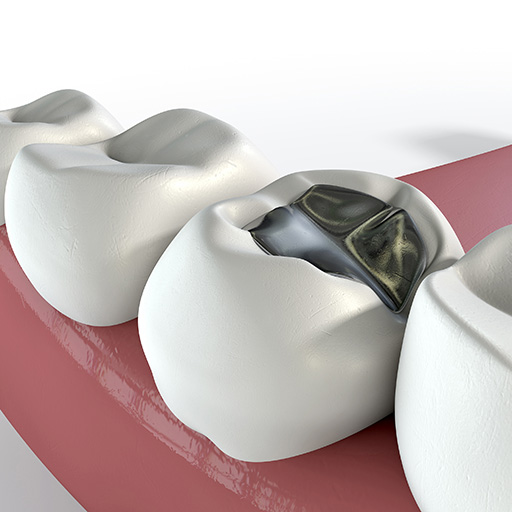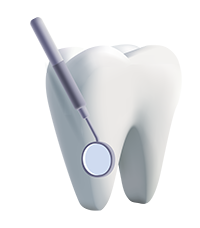
Dental Filling
The purpose of dental filling is to restore the appearance and function of a tooth, prevent further damage to the tooth, and alleviate pain. Professional tooth fillings are typically used to treat tooth damage caused by cavities or trauma. When the surface of a tooth is damaged, a dental filling procedure may be recommended by a dentist.
The Dental Filling Procedure Typically Involves The Following Steps:
- The dentist will examine the condition of all the patient’s teeth to assess whether dental filling or other treatments are necessary.
- Depending on the individual patient’s situation, the dentist may use local anesthesia to reduce pain.
- Subsequently, the dentist will use dental instruments to remove the damaged part of the tooth, ensuring cleanliness and sterility, and confirming the size and shape of the cavity.
- The cavity is filled with amalgam or composite material along with an adhesive.
- Finally, the dentist will polish the filling material to restore the appearance and occlusion of the tooth.
FAQ
- What Are The Common Materials Used For Dental Fillings?
- How Long Does A Dental Filling Procedure Take?
- Does Getting A Dental Filling Hurt?
- What Is The Difference Between A Dental Filling And A Root Canal?
- What Should Be Noted After Getting A Dental Filling?
The common materials used for dental fillings include silver amalgam and composite resin.
Amalgam
Amalgam is an alloy made up of silver, tin, copper, and mercury. It is known for its durability, ease of use, and safety. Amalgam fillings are typically used for filling smaller cavities. However, due to their silver-gray color, they are less aesthetically pleasing and are primarily used in the back teeth to withstand greater biting forces.
Composite Resin
Composite resin has a color that closely matches the natural color of teeth and is less prone to plaque buildup. It is commonly used for cosmetic purposes, such as improving the shape, size, and color of teeth, or for filling cavities in visible areas like the front teeth where aesthetics are important.
The duration of a dental filling procedure can vary depending on factors such as the materials used and the depth of the cavity, but typically the entire filling process can be completed within 20 to 60 minutes. Some more complex cases may require multiple treatments.
During a dental filling procedure, the dentist will use local anesthesia to patients who need it, so you should not feel pain throughout the process.
Sometimes, the filling process may make the tooth more sensitive to stimuli, leading to discomfort.
After getting a dental filling, it may take a few days to a week for your teeth to adjust to the new filling material. This sensation is typically temporary and should gradually diminish over time. If any discomfort persists or worsens, it is advisable to consult your dentist.
A dental filling involves repairing the surface of a tooth and filling a cavity to prevent further damage and restore the appearance of the tooth.
On the other hand, root canal treatment is an effective method for treating pulp and periapical diseases, aiming to save the affected tooth or root. Root canal treatment involves removing the pulp and necrotic tissue from the root canal, proper disinfection, filling the root canal to eliminate adverse stimuli to periapical tissues, prevent or promote the healing of periapical diseases, and thus preserve the affected tooth or root.
After receiving a dental filling, your dentist will provide you with recommendations, such as the timing of eating and drinking, temporary avoidance of certain foods, and a prescription for pain relief medication. Typically, within the first three days after getting a filling, it is advised to avoid chewing on hard objects to prevent deformation or damage to the filling material.
After getting a dental filling, it is important to pay special attention to oral hygiene to prevent tooth decay. This includes brushing with fluoride toothpaste twice a day and using dental floss to clean between teeth. It is advisable to minimize consumption of sugary foods and to schedule regular dental check-ups and cleanings.










